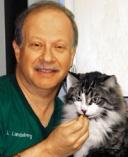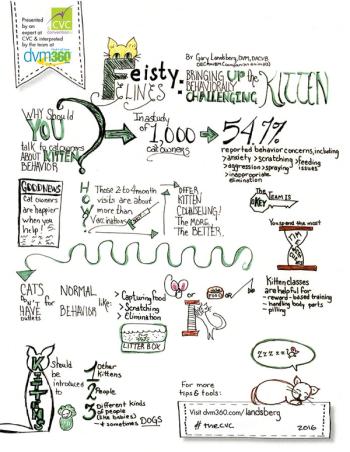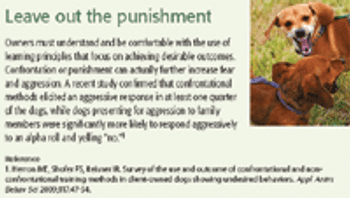
Patients will tell you plenty about their emotional state if you simply pay attention.

Dr. Gary Landsberg received his DVM from the Ontario Veterinary College in 1976 and is a board-certified behaviorist of both the American and European colleges. He offers behavior consultation services at the North Toronto Veterinary Behaviour Specialty Clinic in Thornhill, is a consultant for VIN, Vice President of Veterinary Affairs for CanCog Technologies and a member of the Fear Free initiative executive committee. He is co-author of Behavior Problems of the Dog and Cat. Dr. Landsberg received the companion animal behavior award from AAHA in 2000 and the meritorious service award from the Western Veterinary Conference in 2014.

Patients will tell you plenty about their emotional state if you simply pay attention.

When it comes to creating a positive veterinary visit for pets, owners and teams, Dr. Gary Landsberg says there should be one word driving every action: Individualization.

Here's a quick look at why you should talk to cat owners about kitten behavior.

Resist the urge to squeeze the squirming patient

Your veterinary patients have several responses to extreme stress, but no matter which way they respond, their health may be in danger.

This handy abbreviation will help you pinpoint true cases of cognitive dysfunction in your veterinary patients.

Dr. Gary Landsberg explains the fear of environmental sounds beyond the booms and bangs.

When the nightly walk becomes a nightmare for pet owners and their dogs, it's time for veterinary technicians to intervene.

Dr. Gary Landsberg explains the importance of asking about behavior changes each time you see a pet.

Veterinary behaviorist Dr. Gary Landsberg addresses the short-term vs. long-term solutions for clients whose dogs exhibit this form of noise reactivity.

Many pet owners are misinformed or naive when it comes to understanding canine behavior and training.

Monitoring and assessing behavioral signs is a critical component of every veterinary visit.

A cat may become fearful, anxious or highly aroused in situations that are unpredictable, those that have been previously fear evoking, or when there is a perceived threat.

Psychotropic drugs and natural alternatives might be used to help reduce the signs associated with phobic, panic or chronic anxiety states and to improve trainability especially in situations where the pet is too anxious, fearful or impulsive to control its responses.

Inappropriate elimination, both housesoiling and urine spraying (vertical marking) are the most common feline behavior problems seen at behavior referral practices.

Domestication and selective breeding (genetics) may lead to increasingly affectionate, socially dependent and infantilized dogs with excessive owner attachment and intolerance to being left alone.

Even if a medical problem is diagnosed it can be a challenge to determine whether the problem is causing or contributing to the signs in which case a therapeutic trial might prove useful.

Recommending the right trainer is of utmost importance because a positive training experience can result in fewer behavioral problems.

A veterinary visit should be the starting point for each behavior case. The first step would be to rule out any medical factors that might be contributing to the behavioral signs.

Many pet owners are misinformed or naive when it comes to understanding the behavioral development and training of pets.

How a dog responds to a stimulus will be based on its genetics, socialisation and previous experience.

Domestication and selective breeding (genetics) may lead to increasingly affectionate, socially dependent and infantilized dogs with excessive owner attachment and intolerance to being left alone.

Inappropriate elimination, both housesoiling and urine spraying (vertical marking) are the most common feline behavior problems seen at behavior referral practices.

Psychotropic drugs and natural alternatives might be used to help reduce the signs associated with phobic, panic or chronic anxiety states and to improve trainability especially in situations where the pet is too anxious, fearful or impulsive to control its responses.

A cat may become fearful, anxious or highly aroused in situations that are unpredictable, those that have been previously fear evoking, or when there is a perceived threat.

Behavioral signs such as changes in activity levels, altered responses to stimuli, altered social interactions, anxiety, altered sleep-wake cycles, housesoiling, confusion or memory deficits may arise as a result of brain aging (e.g. cognitive dysfunction syndrome).

Monitoring and assessing behavioral signs is a critical component of every veterinary visit.

Published: April 1st 2012 | Updated:

Published: December 19th 2011 | Updated:

Published: August 1st 2009 | Updated:

Published: August 1st 2009 | Updated:

Published: August 1st 2009 | Updated:

Published: August 1st 2009 | Updated: